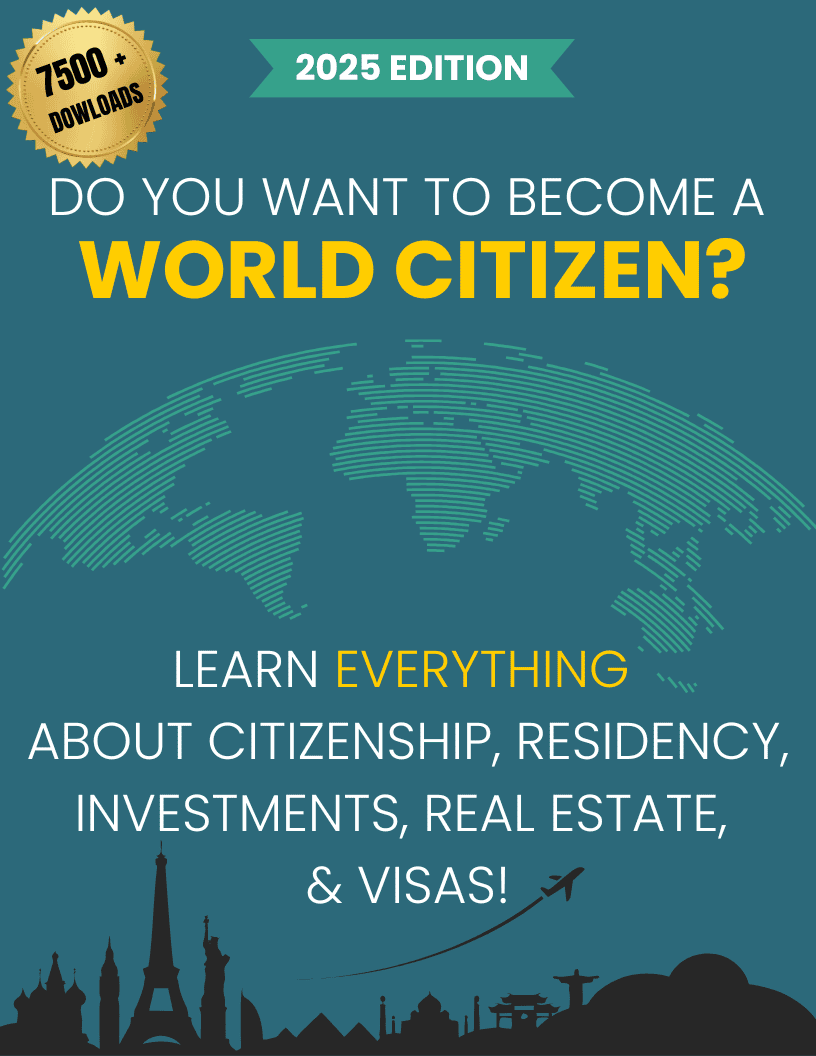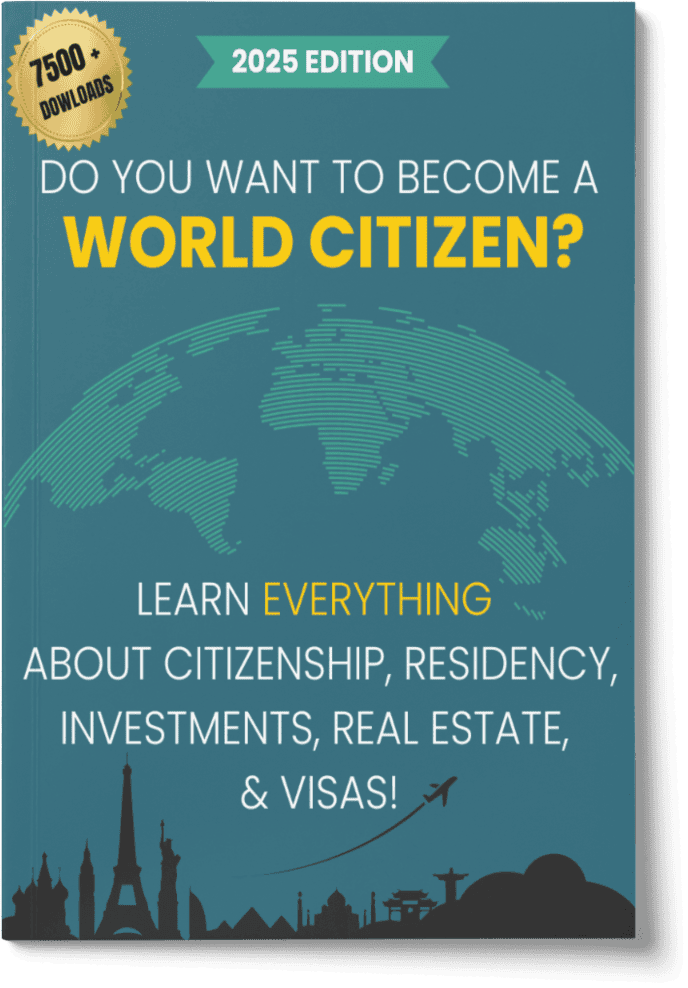L-1 Visas vs. H-1B Visas
Boost Your Freedom Without Compromise.
- Who offers the CHEAPEST program available.
- Who offers the BEST program available.
- What you need to qualify?

In This Article, You Will Discover:
- L-1 visas are for internal company transfers without an annual cap, whereas H-1B visas are for specialty occupations with a cap of 85,000 visas per fiscal year.
- Qualification requirements for L-1 focus on the applicant's role within the company (managerial or specialized knowledge), while H-1B requires a bachelor's degree or higher in the specific specialty.
- Both visas allow for dual intent, meaning applicants can seek permanent residency while on temporary status.
- Company and role types: L-1 is specific to multinational companies transferring existing employees, whereas H-1B can be used by any U.S. employer hiring for specialty occupations.
- Renewal and status adjustment: L-1 has a maximum stay limit (5 or 7 years), and H-1B holders may extend their stay beyond the 6-year limit under certain conditions, such as pending green card applications.
- Who offers the CHEAPEST program available.
- Who offers the BEST program available.
- What you need to qualify?
 Free Consultation
Free Consultation Easy to Use
Easy to Use 100% Safe & Secure
100% Safe & Secure
Understanding the L-1 and H-1B Visas
L-1 Visas are designed for employees transferring within multinational organizations. There are two main types:
- L-1A: For managers and executives
- L-1B: For employees with specialized knowledge
H-1B Visas are for skilled professionals coming to work in “specialty occupations” in the U.S., typically requiring a bachelor’s degree or higher in a relevant field.
H-1B is not limited to multinationals and is the main route for global talent hired directly by U.S. companies.
Eligibility Criteria and Employer Requirements
L-1 Visa
- Employer must have a qualifying relationship with a foreign entity (parent, subsidiary, affiliate, or branch).
- Applicant must have worked for the foreign entity for at least one continuous year within the past three years.
- Transfers must be to a U.S. branch, in a managerial, executive, or specialized role.
- No minimum degree requirement; based on employment history and position.
H-1B Visa
- Any U.S.-based employer may sponsor, provided the job is a “specialty occupation.”
- Position must require a bachelor’s degree or higher (or equivalent experience).
- Employer must gain Labor Condition Application (LCA) approval, guaranteeing prevailing wage and compliant workplace conditions.
- Subject to an annual cap and competitive lottery system.
See more details in our immigrant visas overview.
Step-by-Step Application Process
L-1 Process:
- U.S. company files USCIS Form I-129 petition with proof of corporate relationship and applicant’s credentials.
- On approval, the employee files a DS-160 and attends a consular interview.
- L-1A visas are valid up to 3 years initially, extendable to 7; L-1B’s initial stay is 3 years, extendable to 5.
H-1B Process:
- Employer registers for the annual H-1B electronic lottery.
- If selected, file Form I-129 with approved LCA and all supporting evidence.
- Candidate applies for the visa (DS-160) and attends embassy interview.
- Approved visas allow for an initial 3 years, extendable up to 6.
Required Documents Checklist
- Valid passport (all applicants)
- Completed Form I-129 (employer)
- DS-160 confirmation (applicant)
- Employment verification and offer letters
- Organizational charts and business plans (L-1, if applicable)
- LCA approval notice (H-1B)
- Academic credentials and transcripts (H-1B)
- Proof of qualifying company relationship (L-1)
- Recent photographs (US visa format)
- Proof of work experience
Specifics depend on visa type; see application document requirements.
Advantages and Drawbacks
L-1 Visa
Advantages
- No annual cap or lottery—can be applied for year-round.
- No degree requirement for specialized knowledge roles.
- Allows dual intent and path to green card.
- L-2 spouses can work in the U.S., as of 2025 policy updates.
Drawbacks
- Restricted to employees of multinational companies with qualifying relationships.
- Applicants must have at least one year of experience with the foreign entity.
- Employment limited to sponsoring employer and specific role.
- Max stay: 7 years (L-1A) or 5 years (L-1B).
H-1B Visa
Advantages
- Open to any U.S. employer hiring for specialty occupations.
- “Portability” lets visa holders change sponsoring employers (with filing).
- Clear path to permanent residency.
- Recognized in wide range of industries.
Drawbacks
- Subject to annual cap and competitive lottery; timing is crucial.
- Strict educational/credential requirements must match the offered position.
- Prevailing wage rules must be followed.
- Max stay: 6 years.
Side-by-Side Comparison Table
| Feature | L-1 Visa | H-1B Visa |
|---|---|---|
| Employer Type | Multinational firm only | Any U.S.-based employer |
| Eligibility | 1+ year with related foreign office | Position requires degree; any skilled worker, global applicants |
| Annual Cap/Lottery | None | Yes (annual cap, lottery required) |
| Prevailing Wage Rules | Not specified | Required |
| Validity Period | L-1A: up to 7 years; L-1B: 5 years | Up to 6 years (typically 3+3) |
| Degree Required | No (just role/experience criteria) | Yes (minimum bachelor’s or equivalent) |
| Spouse Work Authorization | Yes (L-2 spouses can work) | Generally not (H-4 rules) |
| Job Mobility | Must stay with sponsoring company | Can transfer to another employer (with H-1B transfer) |
| Dual Intent | Yes | Yes |
Latest Updates and Timelines
- 2025 H-1B visa lottery is highly competitive with fixed cap; new electronic registration and stricter documentation required.
- L-1 policy changes include new integrity fees and revised spousal work authorization.
- Median processing times: H-1B (I-129) is 3.7 months; with premium processing, as little as 12 days. L-1 processing is comparable, but not subject to cap or lottery.
Common Questions
Which visa is easier to obtain in 2025?
Can I change employers on an L-1 or H-1B?
Does my spouse have work rights?
Is there a path to green card under both?
What are the new fees or policy updates for 2025?
In Conclusion
Both L-1 and H-1B visas are essential tools for companies and professionals navigating global talent strategies.
Choosing the best option depends on company structure, the applicant’s credentials, and long-term career plans.
Stay current with policy changes, gather complete documentation, and seek professional guidance for complex cases.
Disclaimer: The information in this article was accurate as of July 2025. Immigration laws and processes are subject to change—always confirm specifics with official sources or expert counsel before applying.
- Who offers the CHEAPEST program available.
- Who offers the BEST program available.
- What you need to qualify?
 Free Consultation
Free Consultation Easy to Use
Easy to Use 100% Safe & Secure
100% Safe & Secure







